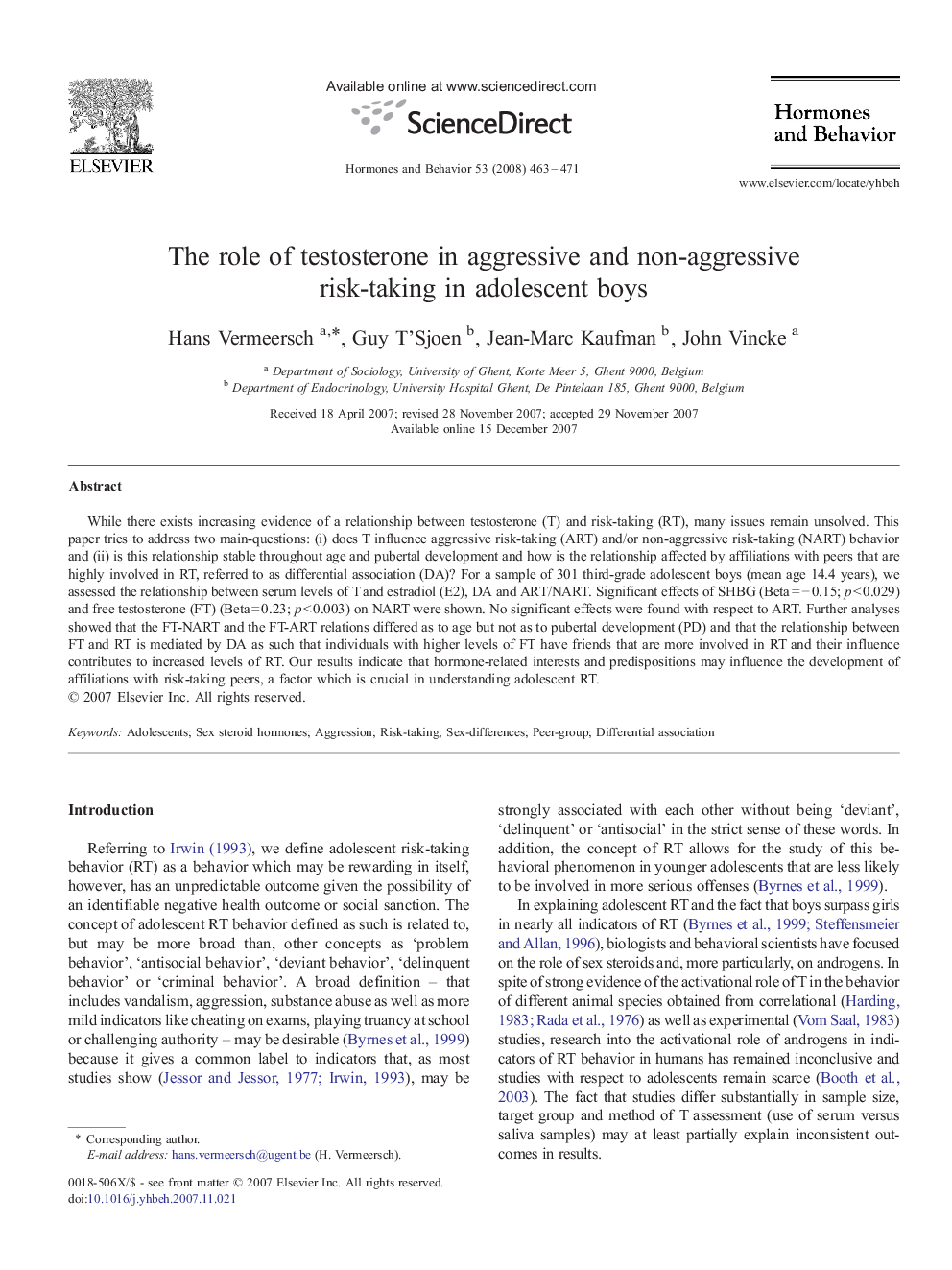| Article ID | Journal | Published Year | Pages | File Type |
|---|---|---|---|---|
| 323287 | Hormones and Behavior | 2008 | 9 Pages |
While there exists increasing evidence of a relationship between testosterone (T) and risk-taking (RT), many issues remain unsolved. This paper tries to address two main-questions: (i) does T influence aggressive risk-taking (ART) and/or non-aggressive risk-taking (NART) behavior and (ii) is this relationship stable throughout age and pubertal development and how is the relationship affected by affiliations with peers that are highly involved in RT, referred to as differential association (DA)? For a sample of 301 third-grade adolescent boys (mean age 14.4 years), we assessed the relationship between serum levels of T and estradiol (E2), DA and ART/NART. Significant effects of SHBG (Beta = − 0.15; p < 0.029) and free testosterone (FT) (Beta = 0.23; p < 0.003) on NART were shown. No significant effects were found with respect to ART. Further analyses showed that the FT-NART and the FT-ART relations differed as to age but not as to pubertal development (PD) and that the relationship between FT and RT is mediated by DA as such that individuals with higher levels of FT have friends that are more involved in RT and their influence contributes to increased levels of RT. Our results indicate that hormone-related interests and predispositions may influence the development of affiliations with risk-taking peers, a factor which is crucial in understanding adolescent RT.
